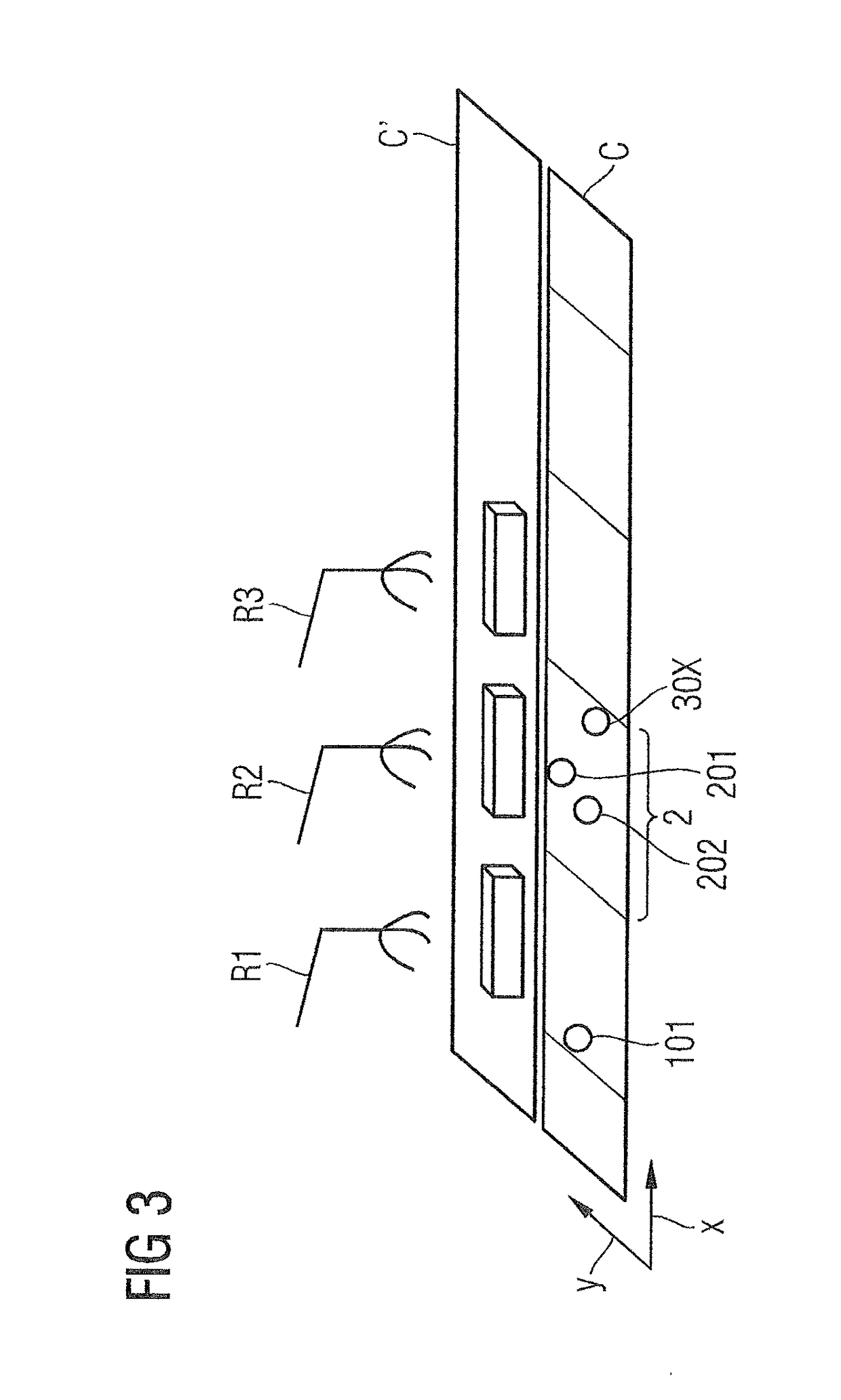Optimizing an Automated Process to Select and Grip an Object Via a Robot
- Summary
- Abstract
- Description
- Claims
- Application Information
AI Technical Summary
Benefits of technology
Problems solved by technology
Method used
Image
Examples
Embodiment Construction
[0037]In the figures, elements with an identical function are provided with the same reference numbers, provided nothing else is indicated.
[0038]In FIG. 1, it is schematically shown how objects 101, 203, 202, 201 are arranged on a conveyor belt C. For example, it has to do with individual products packaged with a plastic foil in a packaging system, which are ready for stacking in a box. For example, six of the individual products are packaged in a box respectively and thus delivered as goods. For this, the objects 101, 203, 202, 201 are taken by robot gripper arms R1, R2, R3 from conveyor belt C and lifted into boxes on another conveyor belt C′. For reasons of clarity, relatively few objects are shown.
[0039]In real packaging systems, objects occur on the conveyor belt C in an irregular and uncontrolled manner. For example, they fall down from a conveyor belt previously located in the production system. For example, during the last processing step, a plastic foil was wrapped around a...
PUM
 Login to view more
Login to view more Abstract
Description
Claims
Application Information
 Login to view more
Login to view more - R&D Engineer
- R&D Manager
- IP Professional
- Industry Leading Data Capabilities
- Powerful AI technology
- Patent DNA Extraction
Browse by: Latest US Patents, China's latest patents, Technical Efficacy Thesaurus, Application Domain, Technology Topic.
© 2024 PatSnap. All rights reserved.Legal|Privacy policy|Modern Slavery Act Transparency Statement|Sitemap


